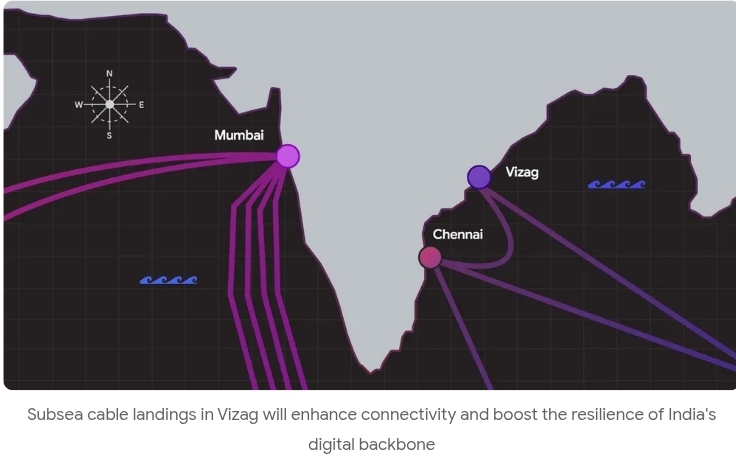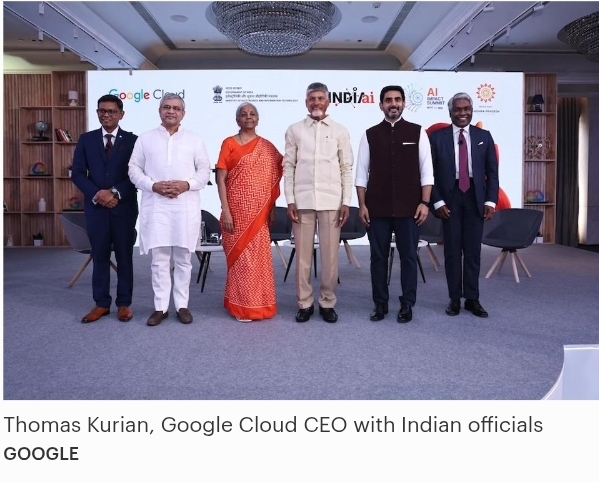Google Drops $15B to Turn India into Its Next AI Compute Empire: What It Means for CX and EX Leaders
Every tech giant makes big bets. But when Google announces a $15 billion, five-year commitment, people pay attention.
That’s exactly what happened on October 14, 2025. Google Cloud CEO Thomas Kurian stood in New Delhi and unveiled plans for the company’s largest AI hub outside the United States. Located in Visakhapatnam, Andhra Pradesh, this massive data center will reshape India’s digital infrastructure landscape. More importantly, it will fundamentally alter how businesses think about customer experience and employee engagement.
For CX and EX professionals, this isn’t just another infrastructure story. It’s a wake-up call about the invisible forces that make or break customer satisfaction.
The Hidden CX Crisis Behind Every Click
Customers don’t care about data centers. They care about speed. Reliability. Seamless interactions.
Yet behind every smooth digital experience sits a complex infrastructure maze. When a customer in Mumbai tries to access cloud-based services hosted halfway across the globe, latency becomes the silent killer of satisfaction. Studies show that up to 50% of cloud customers have brought workloads back in-house due to performance issues.
This matters enormously. Research reveals that 95% of businesses plan to increase AI usage over the next two years. But here’s the uncomfortable truth: only 5% of enterprise AI projects are generating significant returns. The biggest reason? Infrastructure limitations that create friction in the customer journey.
Google’s Visakhapatnam hub directly addresses this pain point. With gigawatt-scale computing power positioned closer to end users, businesses can reduce latency to under 5 milliseconds. For applications requiring real-time performance—from video processing to AI-powered customer service—this represents a game-changing improvement.
When Infrastructure Becomes Experience Architecture
CX leaders often focus on frontline touchpoints: chatbots, personalization engines, omnichannel platforms. These matter tremendously. But they’re only as good as the infrastructure supporting them.
Consider what happens when AI-powered customer service assistants lag by even two seconds. Customer frustration spikes. Satisfaction plummets. Klarna’s AI assistant demonstrated this principle in reverse: by reducing resolution times from 11 minutes to under 2 minutes, the company achieved customer satisfaction levels matching human agents—while handling the workload of 700 full-time employees.
The infrastructure story becomes even more critical when examining employee experience. Remote work now defines modern business operations. Employees dispersed across India need reliable access to cloud applications, collaboration tools, and data repositories. Network latency and bandwidth limitations directly impact productivity.
Data centers positioned closer to workforce populations eliminate these friction points. Employees experience faster application performance. Collaboration tools function seamlessly. The result? Higher engagement, improved morale, and better service delivery to customers.
The Talent Gap That Nobody Talks About
Here’s where the story gets interesting. And concerning.
Google’s investment will create approximately 100,000 direct and indirect jobs. That’s tremendous economic opportunity. But India faces a critical challenge: approximately 83% of Indian companies identify skills gaps as a key barrier to AI adoption. Only 20% of the workforce possesses the required AI expertise.
By 2027, demand for qualified Indian AI professionals could reach 1.25 million. Current supply falls dramatically short. The data center industry alone will require 2.3 million skilled workers globally by 2025, with acute shortages concentrated in Asia Pacific.
This talent crunch has profound CX implications. Organizations investing in AI-powered customer experience tools discover they lack the skilled workforce to implement, maintain, and optimize these systems. Training programs can’t keep pace with technological advancement. Traditional education models become obsolete before graduates enter the workforce.
For CX leaders, this creates a strategic dilemma. Investing in cutting-edge technology without developing human capital capabilities leads to failed implementations. Research shows that 70% of organizations acknowledge the need for upskilling, but only 20% allocate sufficient budgets.
The solution requires a fundamental shift. Organizations must treat workforce development as a parallel infrastructure investment—not an afterthought. Public-private partnerships, structured degree apprenticeships, and continuous learning programs become essential components of CX strategy.
Data Sovereignty: The Trust Factor Nobody Sees
Customers increasingly care about where their data lives. They may not articulate it explicitly, but data sovereignty shapes trust in profound ways.
India’s Digital Personal Data Protection Act, 2023, mandates that certain categories of personal data must be stored within India’s borders. Non-compliance can result in penalties up to ₹250 crore. But beyond regulatory requirements, data localization affects customer confidence.
When customers know their sensitive information remains within their country’s legal jurisdiction, trust increases. This psychological factor influences brand loyalty, purchase decisions, and long-term relationships. Studies show that 82% of consumers say personalized experiences influence brand choice at least half the time—but only when they trust companies with their data.
Google’s Visakhapatnam hub addresses this trust imperative. By establishing sovereign cloud infrastructure within India, businesses can assure customers their data stays local. This becomes particularly critical for healthcare, financial services, and government sectors where data residency requirements are strict.
For CX professionals, the message is clear: infrastructure strategy and trust strategy are inseparable. The physical location of data centers directly impacts customer confidence and regulatory compliance.
The Regional Advantage in a Hyperconnected World
Global hyperscalers—AWS, Microsoft Azure, Google Cloud—control more than two-thirds of the worldwide cloud market. They’re all racing to establish regional dominance in Asia Pacific.
AWS currently leads with 32% market share. Microsoft follows at 23%. Google Cloud holds 12%. But these numbers mask a deeper strategic battle: whoever controls regional infrastructure wins the customer experience war.
Why? Because proximity matters enormously for performance-sensitive applications. Edge computing and regional data centers reduce the physical distance between users and computing resources. This translates directly into faster response times, better reliability, and superior customer experiences.
India now becomes a critical battleground. With over 900 million internet users and rapid digital adoption across sectors, businesses serving Indian customers need local infrastructure. Google’s $15 billion investment positions the company to capture this massive market.
For CX leaders operating in India or serving Indian customers, this creates strategic opportunities. Leveraging locally-hosted cloud services enables better performance, improved compliance, and enhanced customer satisfaction. The infrastructure advantage becomes a competitive differentiator.
When Employee Experience Shapes Customer Outcomes
The connection between employee experience and customer experience has never been clearer. Research consistently shows that when employees receive the right tools, processes, and technologies, they deliver superior customer service.
Digital workplace transformation directly impacts CX at multiple levels. When employees access knowledge seamlessly, they respond to customers faster. When collaboration tools function reliably, teams solve complex problems efficiently. Above all, when systems perform without latency, frustration decreases and engagement increases.
Google’s infrastructure investment enhances these dynamics. Indian businesses leveraging local data centers can provide employees with better application performance, faster data access, and more reliable collaboration platforms. This creates a positive cycle: improved employee experience leads to better customer interactions, which drives loyalty and revenue growth.
The data backs this up. Organizations prioritizing digital employee experience report higher productivity, stronger innovation, and improved customer satisfaction. Conversely, poor technology experiences cause employee disengagement, which cascades into subpar customer service.
CX leaders must recognize this interdependency. Infrastructure investments that improve employee digital experiences simultaneously enhance customer outcomes. The two strategies aren’t separate—they’re interconnected components of a unified experience architecture.
The AI Adoption Paradox
Organizations face a curious contradiction. Everyone agrees AI will transform customer experience. Investments are flowing rapidly. Yet most implementations fail to deliver value.
The infrastructure explanation helps solve this paradox. AI applications require enormous computational resources. Training large language models, running real-time inference, processing massive datasets—all demand computing power that traditional infrastructure can’t provide.
When businesses deploy AI-powered CX tools on inadequate infrastructure, performance suffers. Chatbots lag. Recommendations feel irrelevant. Personalization engines fail to deliver real-time insights. Customers notice the friction, even if they can’t identify the root cause.
Google ‘s Visakhapatnam hub provides the computational backbone needed for AI success. With tensor processing units specifically designed for neural network tasks and graphics processing units optimized for general AI workloads, the facility can support the next generation of CX applications.
But infrastructure alone isn’t sufficient. Organizations also need the change management capabilities to implement AI effectively. Research shows that employee resistance to technology adoption represents a major barrier. Without clear communication, comprehensive training, and demonstrated personal benefits, employees won’t embrace AI tools.
CX leaders must address both dimensions simultaneously: building the infrastructure foundation while developing the human capabilities required for success.

Measuring What Actually Matters
Here’s an uncomfortable truth: many CX leaders measure the wrong things.
They track customer satisfaction scores. Net promoter ratings. Support ticket volumes. These metrics matter. But they’re outcome measures—lagging indicators that tell you what already happened.
Infrastructure performance represents a leading indicator. Latency metrics, system uptime, application response times—these predict customer experience before problems become visible in traditional CX metrics.
When infrastructure performance degrades, customer satisfaction follows predictably. When latency increases beyond acceptable thresholds, frustration accumulates. Most Importantly, when system reliability falters, trust erodes.
Organizations should integrate infrastructure metrics into their CX measurement frameworks. This requires collaboration between CX teams, IT operations, and infrastructure providers. It demands new dashboards that correlate technical performance with experience outcomes.
Google ‘s investment creates an opportunity for this integration. As businesses migrate to improved infrastructure, they gain access to better monitoring tools, clearer performance insights, and more predictive analytics. CX leaders who leverage these capabilities can shift from reactive problem-solving to proactive experience optimization.
The Competitive Clock Is Ticking
While Google makes its $15 billion move, competitors aren’t standing still. Microsoft invested $2.2 billion in Malaysia. AWS poured $6.2 billion into establishing regional infrastructure. Oracle, Alibaba Cloud, and other players are expanding aggressively across Asia Pacific.
This hyperscaler arms race has profound implications for businesses. The companies that establish infrastructure leadership will shape the competitive landscape for years to come. They’ll offer better performance, lower latency, and more comprehensive service portfolios.
For CX professionals, the strategic question becomes: which infrastructure partnerships will enable the best customer experiences? This isn’t a purely technical decision. It’s a business strategy question that intersects with compliance requirements, performance needs, cost structures, and long-term growth plans.
Organizations must evaluate cloud providers based on regional presence, service capabilities, AI functionality, and commitment to local markets. The right infrastructure partner becomes a strategic differentiator in the battle for customer loyalty.
Building Future-Ready Experience Strategies
The Visakhapatnam announcement signals a broader shift. Infrastructure is moving closer to users. Computing power is becoming more distributed. AI capabilities are becoming more accessible.
CX leaders must adapt their strategies accordingly. This means:
Rethinking performance expectations. As infrastructure improves, customer tolerance for slow experiences decreases. What felt acceptable yesterday becomes unacceptable tomorrow.
Integrating infrastructure considerations into CX planning. Technology selection, vendor partnerships, and architecture decisions directly impact experience outcomes.
Developing workforce capabilities alongside technology investments. The most sophisticated infrastructure fails without skilled teams to leverage it effectively.
Prioritizing data sovereignty and trust. Customers increasingly care about data location, security, and control. Infrastructure choices signal commitment to these values.
Measuring holistically. Traditional CX metrics remain important, but infrastructure performance indicators provide early warning signals.
The Path Forward for CX Professionals
Google ‘s $15 billion investment isn’t just an infrastructure story. It’s a fundamental shift in how businesses can deliver customer and employee experiences.
Organizations leveraging this enhanced infrastructure gain competitive advantages: faster application performance, better AI capabilities, improved compliance, and enhanced trust. But capturing these benefits requires intentional strategy.
CX leaders must become fluent in infrastructure implications. They need to understand how data center locations affect performance. They must recognize how computing capacity enables AI implementations. Above all, they should appreciate how regional infrastructure supports workforce productivity.
Most importantly, they must bridge the traditional divide between CX strategy and IT infrastructure. The two domains are converging rapidly. Success requires collaboration, shared metrics, and unified goals.
The companies that recognize this convergence—and act decisively—will define the next era of customer experience excellence. Those that treat infrastructure as someone else’s problem will struggle to compete.
Google just placed a $15 billion bet on India’s digital future. The real question is: what bet will you place on yours?

